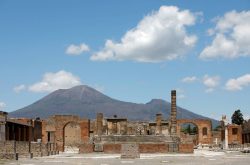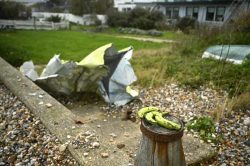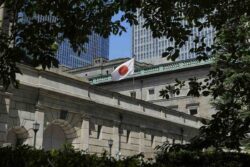16:38 JST, September 23, 2024
Disaster-stricken areas on the Noto Peninsula that are trying to recover from a major earthquake have now been hit by record-breaking heavy rain. Many residents must be overwhelmed by the repeated fury of nature. Extensive support must be provided quickly.
Due to an autumn rain front and low pressure, torrential rain began to fall mainly in the Hokuriku region on Saturday, prompting the Japan Meteorological Agency to issue a Heavy Rain Emergency Warning for Wajima, Suzu and Noto in Ishikawa Prefecture. Rivers overflowed their banks and landslides occurred one after another, leaving people dead and unaccounted for.
The cities of Wajima and Suzu and the town of Noto were heavily damaged by the Noto Peninsula Earthquake in January. Contact has been lost with people who were engaged in recovery work from that earthquake. It is reportedly difficult to fully ascertain the situation, as roads have been severed and communications impacted.
The Ishikawa prefectural government has decided to apply the Disaster Relief Law to the three municipalities and other areas and requested the dispatch of Self-Defense Forces personnel. The central government should make every effort to confirm the extent of the damage and conduct rescue operations.
People who suffered from the earthquake have once again been struck by a disaster. Many residents were directed to evacuate, and some temporary housing units were flooded above floor level. Rainwater also relentlessly entered houses whose roof tiles had been covered with blue tarps since the quake as a temporary measure.
One cannot help but think of the feelings of disaster-hit people who have been forced to evacuate again, this time from the places where they were sheltering. It is only hoped that their spirits, which were just starting to recover from the earthquake, will not wither.
Once the rain stops and restoration work begins, the help of volunteer workers is also likely to be needed. The public and private sectors must work together to extend support to those affected.
The fact that many rivers overflowed their banks appears to be partly attributable to the earthquake. Some people have pointed to the possibility that strong tremors damaged the embankments and revetments of the rivers, and that the heavy rain, which fell on those structures over the weekend, led them to collapse.
The Noto Peninsula has many small rivers. When it rains heavily throughout the peninsula, river water levels tend to rise quickly. The latest disaster has raised concerns about a further delay in restoration work on slopes and other sites.
In the sky over the Noto Peninsula on the weekend, warm, moist south winds flowing in along the edge of the Pacific High collided with north winds circling the edge of a high-pressure system on the continent. That caused a linear precipitation band, in which cumulonimbus clouds develop one after another.
In the seas around Japan, the sea surface temperature has remained high. Large amounts of water vapor have been absorbed into the atmosphere, making it more likely for heavy rain to occur. The autumn rain front stretching east to west has also stagnated. Warnings were also issued for the Tohoku region and Kyushu. Caution continues to be needed.
The Japanese archipelago was battered by heat waves this summer, and thunder and tornadoes also occurred frequently. Disasters have become severe due to global warming. It is essential to be vigilant, especially during the period from summer to autumn.
(From The Yomiuri Shimbun, Sept. 23, 2024)
"Editorial & Columns" POPULAR ARTICLE
-

Violations of Subcontract Law: Major Automakers Must Eliminate Old Practices
-

Local Governments’ Tax Revenues: Devise Ways to Correct Imbalances in Tax Sources
-

Heavy Rains in Asia: Support for Victims, Flood-Control Measures Urgently Needed
-

5 Japanese Business Dinner Mistakes to Avoid — and What They Taught Me About Business in Japan
-

New Nuclear Threat: China Seeking to Follow U.S., Russia in Military Expansion
JN ACCESS RANKING
-

Keidanren Chairman Yoshinobu Tsutsui Visits Kashiwazaki-Kariwa Nuclear Power Plant; Inspects New Emergency Safety System
-

Imports of Rare Earths from China Facing Delays, May Be Caused by Deterioration of Japan-China Relations
-

University of Tokyo Professor Discusses Japanese Economic Security in Interview Ahead of Forum
-

Japan Pulls out of Vietnam Nuclear Project, Complicating Hanoi’s Power Plans
-

Govt Aims to Expand NISA Program Lineup, Abolish Age Restriction





















